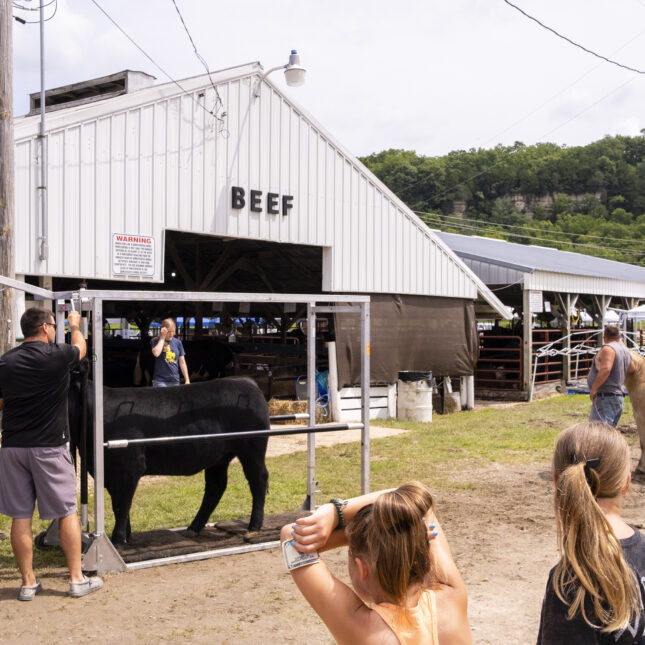
DECORAH, Iowa — It was livestock check-in day at the Winneshiek County Fair, and the dairy barn was consumed with a kind of pre-prom anxiety. A cow named Daiquiri was lumbering back from the milking parlor, adjusting to a new schedule that would have her “mammary system” bulging for showtime. Kennedy was getting a fresh shave, tufts of udder-fuzz drifting to the floor, revealing her resplendent venation. Baby Jesus was extruding shapely, hay-filled turds, each one caught by an eagle-eyed 14-year-old with a bucket, so the heifer wouldn’t sully her own hindquarters.
Lustrous as they looked — clean-boned, deep-ribbed, the picture of bovine health — whether some of these animals should’ve been there at all was a matter of debate. At issue were the lactating cows. Since March, H5N1 bird flu has swept through 157 herds in 13 states, including Iowa, and the actual numbers are almost certainly higher: Those are just the cases that have been officially reported. The virus has a special affinity for udders, likely spreading through droplets of raw milk clinging to equipment that gets used on cow after cow.
A fair is a reunion of sorts, the agricultural equivalent of an extended family converging for the holidays. Last week, at Winneshiek’s — “The Biggest Little Fair in Iowa” — that meant only 9 or 10 lactating cows from a handful of farms. At the Iowa State Fair in August, it might mean hundreds of them, from a long list of dairies scattered across six different states. Just as authorities fretted about Christmas Covid spikes, so vets are trying to prevent trailers from clanking back home with microscopic stowaways replicating in udder cells.
They’re also hoping to avert inter-species spread. Cow-to-chicken could wipe out a whole poultry flock. Cow-to-pig could put the virus into an efficient mutation machine, potentially allowing a pathogen that prefers udders and bird intestines to become one that likes living in our lungs. Though the handful of human infections documented so far in farmworkers have been mild, cow-to-human is a real risk, too. The longer H5N1 circulates in cattle, the more it poses a pandemic risk for us.
As Minnesota state veterinarian Brian Hoefs put it, “We are still licking our wounds from a situation that occurred in the early 2000s, where swine influenza was spread to people at the state fair. That’s something we do not want to repeat.” It wasn’t an isolated event. In 2012, there were over 300 human cases of swine flu — resulting in 16 hospitalizations and one death — and most of them were traced back to pigs at fairs.
Hence the lactating cow question. “The simplest solution to reduce that risk in a drastic way is just not to have lactating dairy cows at exhibitions or shows,” said Joe Armstrong, a cattle veterinarian at the University of Minnesota Extension.
That’s the route Michigan has taken, and certain fairs elsewhere have followed suit. Some are doing what they did in 2020, at the height of the Covid pandemic, making lactating-cow competitions virtual. But in the U.S., when there’s talk of public health restrictions, there’s disagreement — about the role of government, about how much risk is tolerable, about when it’s worth disrupting the occasions that bind communities. States like Iowa, Wisconsin, and Minnesota have so far allowed lactating dairy cows at shows, but only if they’re flu-tested in the seven days before they arrive. In Colorado, meanwhile, such precautions are recommended but not required.
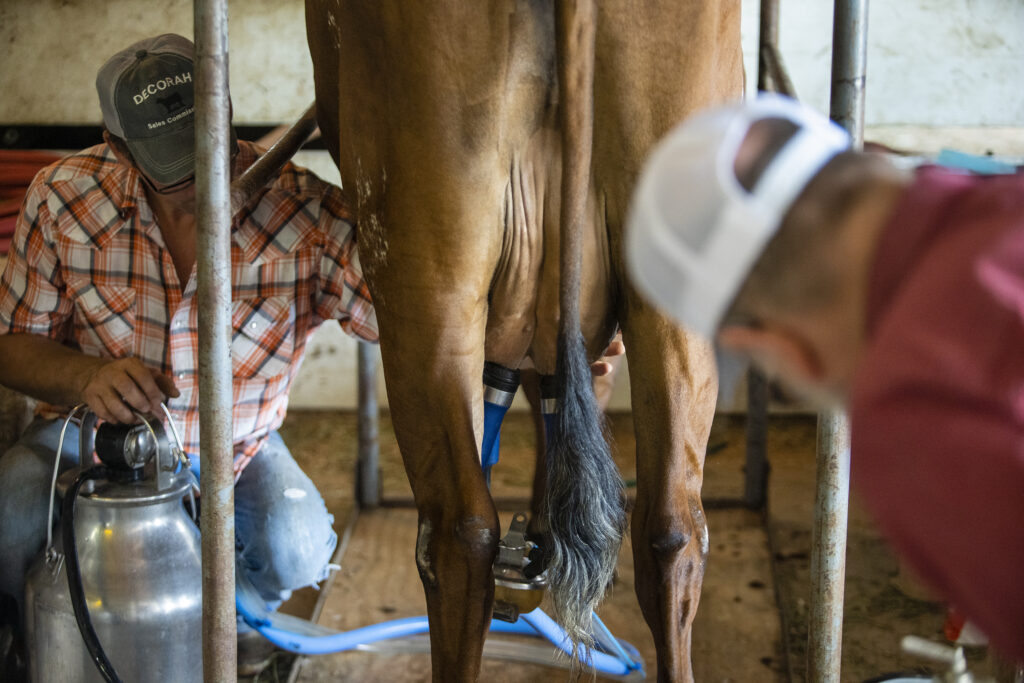
Yet for some milking families, fair season is a yearly sacrament, not just a time to show off your herd’s genetics, but a way to teach kids the complex work involved. Pull up to John and Peggy Sparrgrove’s farm of 200 cows, a half-hour south of Decorah, and you might find Peggy on the front lawn, holding one heifer in each hand by the halter, showing her grandchildren how to get animals roped to lead. Her kitchen was hung with more cow-show plaques than you could count, for the best Guernseys and Holsteins and Milking Shorthorns.
They were mindful of the risks, but had faith in their neighbors, their vet, and the official process for maintaining biosecurity. They’d just phoned to arrange some pre-fair testing. These were the events their grandkids had spent all year working toward, and to them, the current threat didn’t justify scrapping the whole idea. When John announced that Dubuque had just called off its open show, Peggy said, “I’m going to call Molly, and tell her not to cancel Fayette County, and invite everybody to that one.”
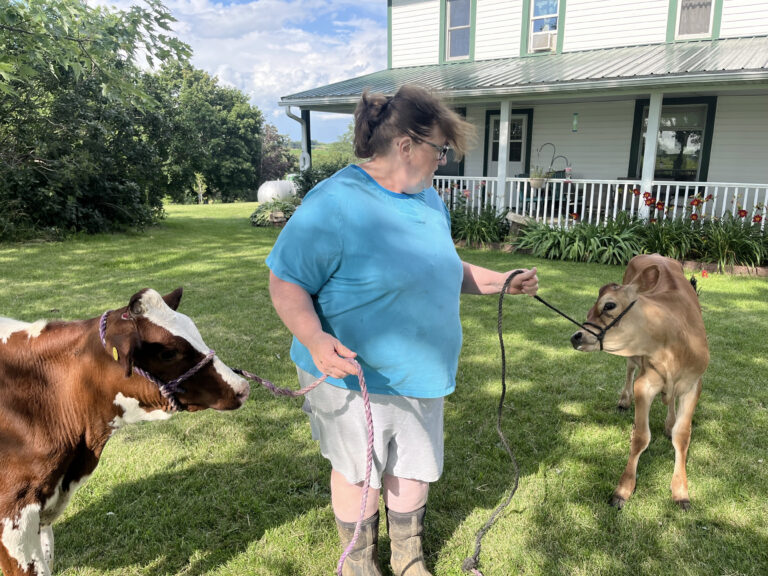
To the outside eye, the occupants of the Winneshiek County dairy barn seemed relaxed. When they weren’t coiffing or cleaning up after their cattle, they lounged in beach chairs, popping fried cheese curds, enjoying the breeze of industrial fans. But there was an undercurrent of concern: They didn’t want anyone overstating the flu threat or giving their industry a bad rap. “Our milk is totally 100% safe to drink because everything’s pasteurized,” said Mark Knutson, who milks around 400 cows in Ossian. “But, you know, the media gets hold of it, blows it out of proportion, scares everybody.”
Then again, he thought some precautions made sense. Knutson is on the fair board, which had canceled this year’s open-class dairy show — partially because of low enrollment, partially because of bird flu risk — bringing the number of lactating cows down to a tenth of what it might’ve been.
That was the thing. A dairyman might give a reflexive eye roll about some rules, but also describe them as necessary; you can resent something that makes a tough business tougher and also see why it’s in place. One used the word “propaganda,” then corrected himself, saying the virus is real and must be taken seriously. It might add another loop of red tape, but the whole business is already sticky with it. There are regulations about who can open your bulk tank, limitations on antibiotics. In fact, some aspects of this year’s state orders have long been standard practice: a licensed vet at the fair check-in, for instance, examining animals and their health papers, ensuring no foot rot or mastitis gets in.
Even within a 10-mile radius, though, there could be irreconcilable views. To Hannah Vagts, the 16-year-old “County Dairy Princess Alternate,” who’d earned her sash and tiara milking on two farms, testing was what made the fair feel safer for animals when so much about this virus is still unknown. To D.M., the co-owner of a herd of 500, who wanted to be identified only by initials, testing was the reason he was sitting this year’s cow shows out.
“They’ll test the cows’ milk, that way they’ll find out if there’s any more of it out there, which is none of their business, as far as I’m concerned,” he said. If bird flu had arrived on his farm, he didn’t want to know. He’d of course isolate any sick animals in the sick pen, and discard their milk, the way he always does. The cows are his livelihood. He takes care to keep them healthy, and to keep his product pristine. But he’s too afraid of the stigma that might accompany a positive test — so afraid that he wouldn’t even apply to the federal program that would reimburse him for liquid pounds he couldn’t sell, leaving money on the table. Vets were hearing such views from other clients, too, and nationally, only around 12 producers have applied for those government refunds.
“If it shows up, you don’t know if your creamery is going to keep taking your milk,” he said, even though the protocol is for sales to start back up again after a 30-day hiatus.
For now, that was probably hypothetical. While Iowa had recorded 13 infected herds, there hadn’t yet been any reported cases on dairies in the state’s northeast corner; the closest ones were a few hours to the west, or north in Minnesota. But in his and some of his neighbors’ views, it was only a matter of time. They talked as if spread were inevitable, bovine H5N1 on its way to being endemic, an annoying fact of life that dairies just have to deal with.

That was what fairs were trying to avoid. At Winneshiek, real estate had been reshuffled, so the dairy cows were no longer housed with the ducks and chickens. Each farmer was encouraged to bring a portable milker — “the claw,” as it’s known, a finger-like suction for every teat. If they couldn’t, they’d get their own station in the parlor. “We’re not having anyone share with another exhibitor,” explained fair board president Mark Steffens, a former dairy producer himself.
Much of what they were doing was in line with recommendations from the Centers for Disease Control and Prevention. The only bullet points that weren’t enacted were the suggestions not to eat in the dairy barn and not to bring in toys or drinking vessels.
The plan wasn’t foolproof. Kids wouldn’t take sick animals to a fair — they want to show off their halest and heartiest — and check-in desks wouldn’t let obviously ill cows in, but the milk in a bulk tank can come back positive well over a week before clinical signs show up in a herd, meaning the virus can be present before anyone could notice symptoms. Plus, as Iowa State University Extension bovine vet Philip Jardon put it, “Test on Sunday, if an animal gets exposed on Monday or Tuesday, you’re not going to catch that.”
Then again, farmers know that fairs always involve some risk, and usually isolate their show animals afterward. Even banning lactating cows would reduce but not eliminate the chances of infection. After all, the virus infects not just domestic animals, but wild ones, too: It could be carried by a pigeon or a barn swallow.
Almost all of that — the risk calculus, the debate — was invisible to the lay visitor on the opening afternoon. The “carcass contest” was on in the show ring, teens guiding stubborn beef cattle toward a squeeze of lubricating vegetable oil and then an ultrasound, so the judge could get a look at the marbling of the ribeye. Out near the bandstand, old-timers were reliving their agrarian youths through the oompahing poetry of a polka band: “I smoked my first cigarette / out behind the barn / that’s one day I won’t forget / out behind the barn.” Near the poultry cages, a kid sat daydreaming, absently stroking his pet rooster.
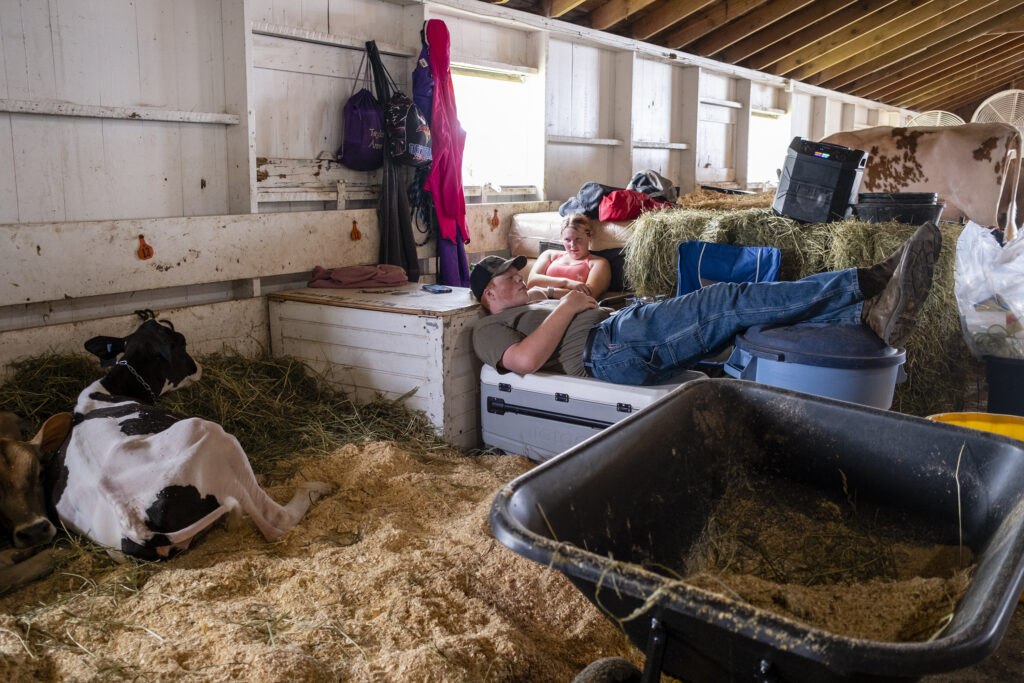
This is what success might look like. “In the realm of biosecurity, if it’s working, nobody knows,” said Danelle Bickett-Weddle, owner of the sought-after veterinary public health consulting firm Peventalytics, in a phone interview. You take precautions, impose restrictions — and the payoff lies in an absence: No flu cases linked to your event.
The only way to make sure is to test widely, hoping that every sample comes back negative. That wasn’t in the cards at the moment, given some producers’ sentiments. Even if it were, that kind of triumph doesn’t necessarily make the news. It’s just business as usual, kids coming home with an award-winning swine or a stuffed animal, the only symptoms the aftereffect of fried food or the fatigue of rope-leading a recalcitrant heifer.
Helen Branswell contributed reporting.
To submit a correction request, please visit our Contact Us page.
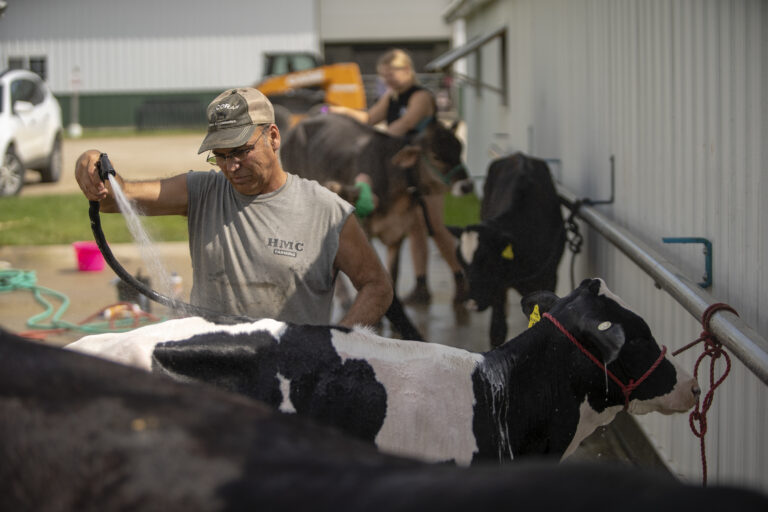
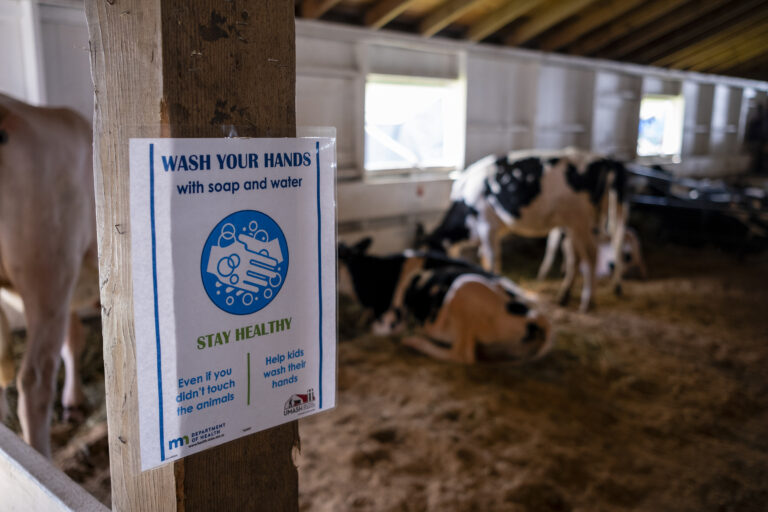





STAT encourages you to share your voice. We welcome your commentary, criticism, and expertise on our subscriber-only platform, STAT+ Connect